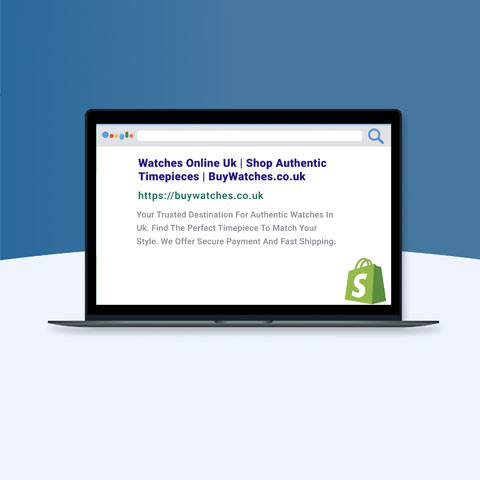Get More Conversions from Your Product Content


How much do you need to know about a product before you add it to your online shopping cart? For some people it’s enough to have a quick glance at a product image, while others might browse dozens of product reviews on different websites and still be uncertain about making their purchase.
Having an effective product content strategy is a crucial part of product content management that makes a customer click that “buy now” button without hesitation.
What is Product Content and Why is it Important?
Product content is all the information provided by retailers or brands to describe their offerings. It includes product names, images, videos, size and dimensions, prices, instructions for use, reviews, and any other details that help to get a better idea of the product.
This simple product content definition illustrates the importance of product data for business; the more comprehensive and complete the product information is, the more chances that a potential customer will make the right decision.
The more accurate and reliable the product description is the fewer chances for product returns and poor customer experience.
How to Create Product Content that Drives Higher Conversion
1. Focus on your target audience
Creating buyer personas will help you understand what your ideal buyer is and address them with an engaging product description.
2. Create a consistent product content strategy
Make sure your potential customers are getting appropriate information in every phase of the buying cycle. The consistent data will help you avoid any confusion, and enhance your credibility. Conducting a product content audit can help you to identify content-related problems and fix them, to enrich your product visibility.
3. Work on a product content style tutorial
The product information management best practices involve creating a product сontent style guide, which helps your product content line up with your branding. It can include everything used in the product description: from grammar to the tone of your voice.

4. Put product content and design in harmony
Product data and design should be successfully combined to give the best possible picture of your offerings. The design should line up with the product description, the eye-catching product images should add up to the quality, instead of distracting the potential buyer.
5. Create unique product content
Hire copywriters to create original and fresh product descriptions. Use successful product content examples and study different cases. Avoid duplicate content, as it makes your website’s Google ranking go down.
6. Work on rich product content
Make sure each type of your product information goes further and makes a difference:
Texts. Use the engaging evocative tone that motivates to buy. Provide customers with reliable product reviews or proofs from influencers. Use sensory words, to make your customers feel like they already own a product. Make it easy to read, talk to a buyer like you are longtime friends. Always take a side of a reader: would you buy a product after reading this text?
Images & videos. Invest in high-quality product images or video reviews that will give a full idea of your offerings. Present your products from a close-to-life view by shooting unique photos. Try to upgrade your product images and make them better than your competitors’ ones. Create comprehensive video guides for use, if it’s appropriate. It will help to see how the product is used in everyday life.
Product specifications. Give as many features specifications of the product as possible. Consider that some potential buyers already possess more knowledge than the others, so the more specifications you provide, the more chances to sell the product. Focus on the results of the purchase: make customers imagine what they will gain after buying. Make the long descriptions scannable by using bullet points or subheadings.
Challenges with Product Content Management
Successful product content management is the basis of sales operations in your company. Here are some product information challenges you need to know about so that it does not take you by surprise.
1. Different product content requirements of multiple sales channels
To follow product information management trends and keep up with the times, businesses have to choose an omnichannel sales approach. It means the challenge of meeting numerous various demands of different eCommerce platforms. Usually, every channel has its own product data requirements and standards.
You have to adjust your product information to multiple listing approval policies, which might require changing the data types and formats. Some eCommerce platforms have more restrictive categories than others.
Without well-established product content syndication and automation, it becomes difficult to simultaneously allocate product data for different markets.
2. Organizing huge amounts of content
For a company that offers multiple products available on different platforms, organizing massive amounts of product data can be overwhelming. It becomes especially challenging when it comes to timely product content updates.
3. The time-consuming process of managing product data sheets
Creating high-quality product data sheets means dealing with the product descriptions and product specifications, such as title, material, size, dimensions, colors, prices, instructions for use, and many others. If this product page content is managed manually, it means not only boring work but also a high chance of errors that may lead to increased returns and poor customer experience. What’s more, it can harm the reputation of the company.

4. Delays in product launches
Dealing with inaccurate or incomplete product information leads to spending more time identifying and correcting errors manually. As a result, you get costly disappointing delays in product launching.
5. Poor communication between departments responsible for product content creation and distribution
If you do not establish an effective product content management system and all the routine work is done manually, you have a risk of huge gaps in communication between different business departments.
Each product content provider can make a costly mistake that will lead to a lack of collaboration and misunderstandings between departments and team members.
6. Low productivity and inefficiency
Without having a product content management software in your company, you and your team members will suffer from manual repetitive and unsatisfying work, related to product information management. It becomes difficult for teams to update others on principal tasks and deadlines, which creates confusion and lowers productivity and efficiency.
7. No time for creative work
The time-consuming manual tasks related to product info are time stealers that prevent teams from focusing on more creative work. Instead of filling in the error-prone spreadsheets, your teams could devote their time to more valuable work, directly related to making your product better.
Product Content Delivery Automation - Game Changer in eCommerce

Companies that want to be omnipresent and successfully cope with the above-mentioned challenges, choose to incorporate new technologies. Businesses choose product syndication management software to organize, enrich, categorize, and publish product data automatically.
To control product data and maintain product content syndication (automated product content delivery), you can work in a PIM (Product Information Management).
The software can offer product content mapping templates that will help you deliver the right product content, to the right customers, at the right time, while saving your time for more creative tasks.
Final Thoughts
Well-crafted product content will take you far! Meanwhile, customers will always be close by, with their shopping basket, ready to check out. Contact the experts at Gepard to discuss how to automate your product data delivery and improve your customers experiences.
Want more like this?
Want more like this?
Insight delivered to your inbox
Keep up to date with our free email. Hand picked whitepapers and posts from our blog, as well as exclusive videos and webinar invitations keep our Users one step ahead.
By clicking 'SIGN UP', you agree to our Terms of Use and Privacy Policy


By clicking 'SIGN UP', you agree to our Terms of Use and Privacy Policy
Other content you may be interested in
Categories
Categories

Want more like this?


Want more like this?
Insight delivered to your inbox
Keep up to date with our free email. Hand picked whitepapers and posts from our blog, as well as exclusive videos and webinar invitations keep our Users one step ahead.
By clicking 'SIGN UP', you agree to our Terms of Use and Privacy Policy






![[Research] Apps: The Secret Engine of Ecommerce Growth [Research] Apps: The Secret Engine of Ecommerce Growth](https://images.bizibl.com/sites/default/files/apps-and-web-similarweb-480.jpg)


